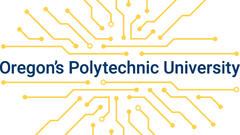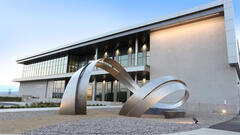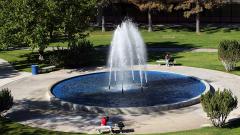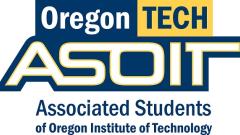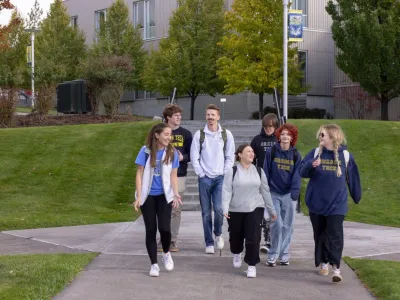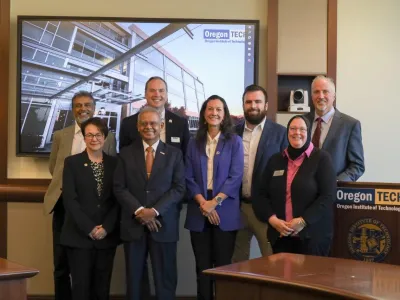Oregon Institute of Technology (Oregon Tech) Geomatics graduates, Michael Ness and Cameron Smith, have been selected by the National Society of Professional Surveyors (NSPS) as winners of the 2020 NSPS Student Project of the Year.
The project was part of the 2020 NSPS Senior Project Competition, which tasked teams with creating geomatics-related projects. Recent graduates of the Geomatics program at Oregon Tech, Michael studied both Surveying and Geographical Information Systems (GIS), and Cameron pursued the Surveying option of the program. As part of their 2020 Senior Project, Cameron and Michael were given the opportunity to update the Oregon Tech campus control network. The campus control network is a network of monuments distributed around the campus that are used for control, i.e. each control monument has known coordinates, which enables each control monument to be used to determine the coordinates of other points of interest. Those points of interest could be property corners or other features, and their coordinates are known in the same reference system as the control monuments.
“An example of a monument would be a metal rebar that is set at a property corner to show proof on the ground of where the property boundary is located,” explains Michael. “Another example of a monument is in the campus control network. The control monuments are also metal rebar with plastic/metal caps on top. They are set in the ground in somewhat random places around the campus, but they are not property corners.”
The project involved obtaining updated GPS coordinates of 21 campus control monuments and updating the 2011 Campus Control Network Student Handbook, which is a record of the control monuments on the campus and their associated data.
One of the problems that Cameron and Michael encountered with this project was that the control network did not have enough monuments to survey the northern part of the campus with drones. They decided to enhance the project by adding 12 monuments to the network. The other problem was that the PDF format of the student handbook was outdated. Michael modernized the student handbook by creating an online GIS map to view and edit the monument data.
Although there was only three months to complete the work, Cameron and Michael succeeded in updating and adding to the campus area network with a high level of accuracy, and Michael succeeded in creating a GIS that would both enable students to view and edit the monument data in an online map and would autogenerate the original student handbook whenever data in the GIS is updated.
“Winning this award is nice because Cameron and I put a lot of work into this project to help the Geomatics department, to create a cool GIS application, and to combine surveying and GIS,” said Michael. “We are glad for the recognition because it lets us know that there are more people than just faculty and students that think we had a worthwhile project.”
At Oregon Tech, the study of Geomatics combines theory, problem-solving and field work, which Michael and Cameron agree that they’ve experienced. “In my search for a meaningful career, I was looking for work that would bring me outdoors and that would enable me to use my detail-oriented mind,” said Michael. “Prior to this search, I hadn't heard anything about land surveying. But when I shared my discovery with family and friends, I was surprised to hear from several of them that they had family or friends who were land surveyors. Although I don't have any relatives in this field that I am aware of, I felt like I was inheriting the inspiration to pursue this career field.”
Cameron shared, “Growing up in rural Oregon [Glendale], a love for the outdoors was instilled in me at a very young age. After working in an inside environment for several years, I realized that I needed a career that would allow me to work outside on a daily basis in order to be truly happy. Oregon Tech's Geomatics degree fit the bill perfectly. I was instantly drawn to the hands-on curriculum and proven track record of student success that Oregon Tech offered. The mentorship I received from my professors at Oregon Tech during my education was an added bonus and not something you find at every school.”
Michael added, “The meaning of land surveying will grow for me as I continue to learn about its history, its importance in building societies, and its protection of landowners. Its meaning will begin with my preexisting desire to work in a field that combines both nature and mathematics, and it will further develop as I begin to work side-by-side with professional land surveyors who will share their experience and inspiration with me.”
Together with winning the 2020 NSPS Student Project of the Year, the report of the project is also being published in the Surveying and Land Information Science (SaLIS) journal, which is the official publication of the American Association of Geodetic Surveying (AAGS).
###

